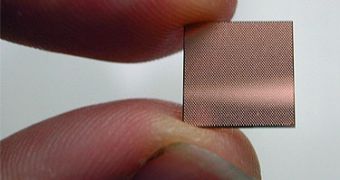As Intel is preparing the launch of its new line of processors based on the 45nm manufacturing process, manufacturers are putting their game face on, because they are going to need it. In Intel's roadmap, they have announced the processors that are going to be built on the 45nm process node, with a later switch to 32nm, all of this, as they say, are just to respect Moore's Law, which states that the number of transistors of an integrated circuit doubles every two years.
This was the original game plan to which Intel has devoted its resources in order to keep the project on track, but as they are speaking of 32nm process node and being able to still keep up to Moore's Law for another couple of years, there is little knowledge as to what is going to happen after that point in time. We have split the atom, the physical boundaries have been reached and soon making an even smaller process node will be hard to do if not impossible considering the implications, in order to have an atom-sized transistor, you need and atom sized tool.
But for now hopes are high with Intel marching ahead with new innovations, and companies such as the Taiwan Semiconductor Manufacturing Company (TSMC) have announced the support of 55nm process node. They have also stated that the 55nm process node is a "90% linear-shrink from the 65nm", and will provide significant cost savings, and 10-20% lower power consumption.
Meanwhile, Sysopsys company has stated that 45nm processing tools will be available by the second half of 2007. In the same period of time other companies will start introducing 45nm production, to meet the industry's demand, expected along side with Intel's new processors line. NVIDIA and AMD have both started pilot runs on the 55nm process node at TSMC, and market availability for these products will be in the first half of 2008.

 14 DAY TRIAL //
14 DAY TRIAL //